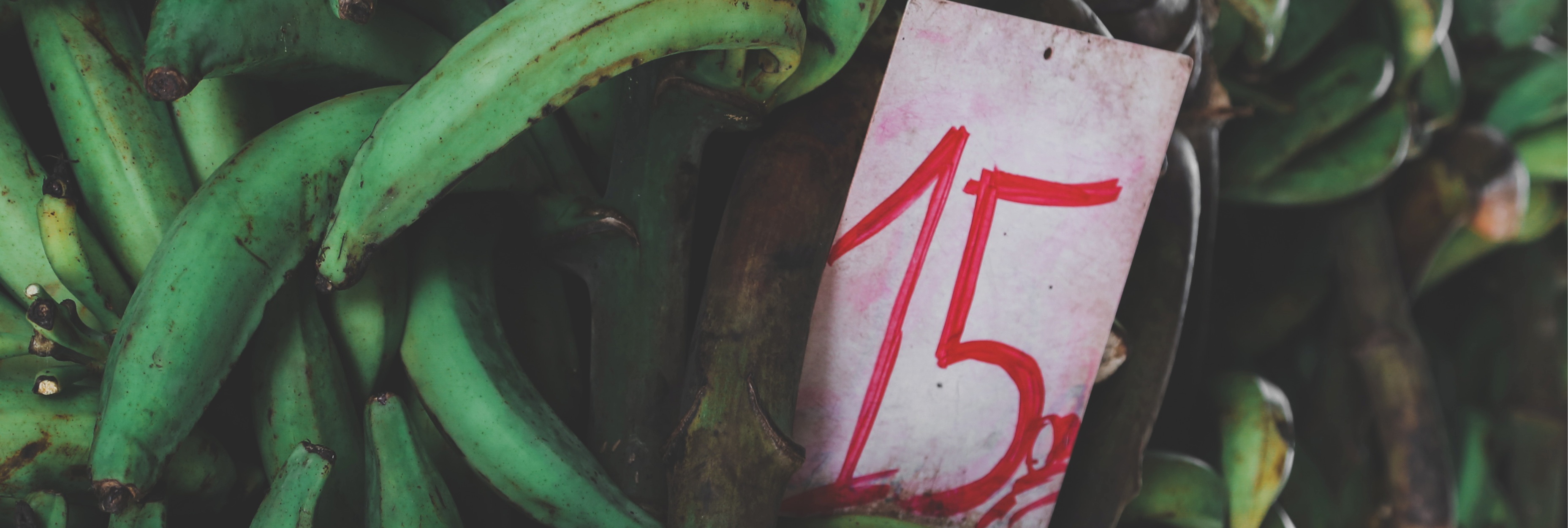Food waste is a substantial component of the overall waste generated by the hospitality sector. It accounts for over 50% of the waste produced by certain kitchens. The issue represents a misuse of the resources used to grow the food, leading to a great economic loss. It has been estimated that global food waste can cost up to about one trillion dollars annually. As a result of this, in this article, we've included a way to calculate the food waste in your restaurants and make your restaurant more sustainable. Read on for more.
This raises even greater concern in countries such as the UAE, where its rapidly growing hotel and catering industries are expected to expand significantly in the next few years. This expansion would lead to an increase in the waste generated by the industry and consequently, would lead to an increase in costs.
In order to have a better understanding of food waste and help the UAE’s hospitality sector become more efficient, I have worked as a Research Associate on a series of studies focusing on this topic while at Masdar Institute of Science and Technology, in Abu Dhabi. I examined the current status of food waste management in the UAE, taking mainly hotels as examples. The findings have been so relevant that they can be applied at a global scale.
In a previous article, I revealed one of the main insights from our study: the top 3 factors that cause food waste in the UAE’s hospitality industry. Overall, serving style, the type of food served, and the prediction accuracy of the number of expected customers are the main contributors to food waste.
As part of our studies, we also developed a metric to help managers and directors measure how sustainable a dining event is. This is FRESH, a Food-service Sustainability Rating for Hospitality Sector Events.
FRESH provides the means through which different establishments worldwide can be compared with one another. In addition, the formula is a holistic indicator. It is not only designed to be able to rate events and compare them to one another but also, to provide guidance to hospitality sector staff in terms of where they need to direct their efforts to make their events more sustainable.
FRESH Equation:
FRESH = [food waste indicator] x [no show indicator] x [over show indicator] x [planning indicator] x [portion size indicator] x [economies of scale indicator] x [post-event process indicator]
Post-Consumer Food Waste (PCFW) is an important parameter used in the calculation process. In the FRESH equation, the PCFW value and the food waste indicator value are multiplied with six other sub-indicators, each reflecting a dimension of the food service process, and many of which are similar to the top determinants of food waste:
Food waste indicator: This is a measure of the PCFW per guest actually generated at the event.
Food waste indicator = PCFW ÷ (actual number of guests that attended the event)
No-show indicator: This is a representation of the number of guests who did not attend the event relative to the number of guests who were expected.
No-show indicator = [max [ (expected number of guests - actual number of guests) ÷ expected number of guests ] ,0 ] +1
Over-show indicator: This is a representation of the excess number of guests who attended the event relative to the number of guests who were expected
Over-show indicator = [max [ (expected number of guests - actual number of guests) ÷ expected number of guests ] ,0 ] +1
Planning indicator: This fraction reflects the extra food amount which the kitchen staff of a hospitality establishment deliberately prepared.
Planning indicator = number of guests cooked for ÷ expected number of guests
Portion-size indicator: This is a ratio between the amount which the kitchen staff expected each guest would eat and the amount each guest actually ate.
Portion-size indicator = planned portion-size ratio ÷ actual portion-size ratio
Economies of scale indicator: A constant percentage of waste for a larger event may be considered less sustainable than the same percentage of waste for a smaller event. The economies of scale indicator, therefore is designed to give smaller events an advantage in the calculation of their FRESH values.
Planned portion-size ration = amount of food prepared ÷ number of guests cooked for
Post-event process indicator: It helps to influence FRESH from the perspective of what is done with the food waste at the conclusion of the event.
Actual portion-size ratio = amount of food eaten ÷ actual number of guests
The lower the FRESH value, the more sustainable the event can be considered with regards to its food service process and food waste mitigation procedures. The value of FRESH tends to be in the range of 0-3. It is always a positive value.
Addressing food waste is a challenge, given restrictions on disposal and recycling. Even efforts to reduce waste through food donation have limitations created by the need to comply with food safety regulations. Rather than having to address post-consumer food waste, the best policy would be to minimize inappropriate food production in the first place. The FRESH metric described in this report is a step towards facilitating that minimization.
San aa I. Pirani, Ph.D., is an independent consultant currently participating in a United Nations Economic and Social Commission for Western Asia (ESCWA) project on the development of member countries’ capacities to address the Water and Energy Nexus for achieving the SDGs from the operational perspective. She is a recent graduate of Masdar Institute of Science and Technology in Abu Dhabi. Her PhD research focused on food waste management for the UAE hospitality industry, while also addressing strategies that would help minimize the food waste generated. Sanaa holds a BEng in mechanical engineering from NED University of Engineering and Technology in Pakistan.
aa I. Pirani, Ph.D., is an independent consultant currently participating in a United Nations Economic and Social Commission for Western Asia (ESCWA) project on the development of member countries’ capacities to address the Water and Energy Nexus for achieving the SDGs from the operational perspective. She is a recent graduate of Masdar Institute of Science and Technology in Abu Dhabi. Her PhD research focused on food waste management for the UAE hospitality industry, while also addressing strategies that would help minimize the food waste generated. Sanaa holds a BEng in mechanical engineering from NED University of Engineering and Technology in Pakistan.
Photo credit: Tadeu Jnr via Unsplash









Comment on my blog